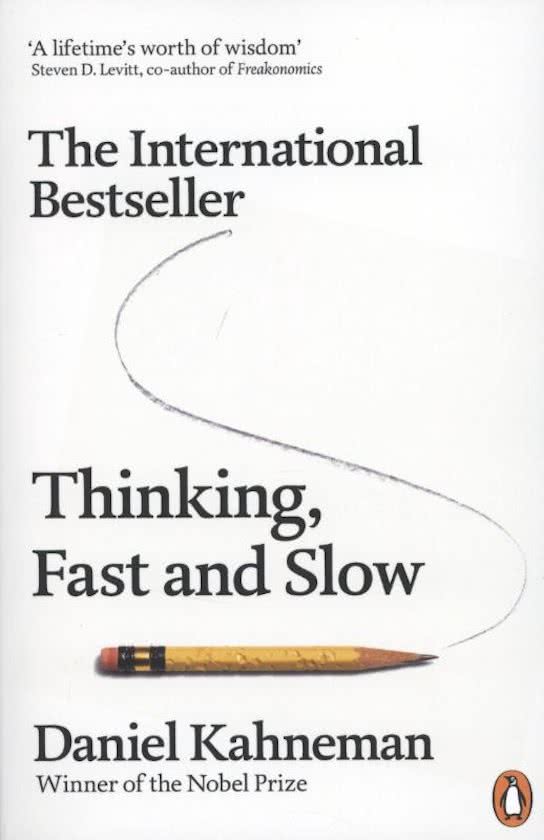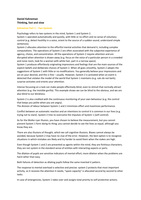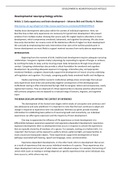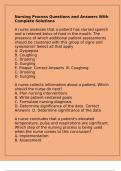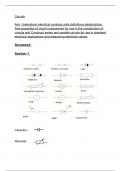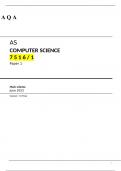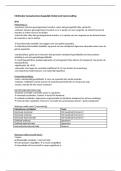Thinking, fast and slow
Kahneman Part 1 – Two Systems
Psychology refers to two systems in the mind, System 1 and System 2.
System 1 operated automatically and quickly, with little or no effort and no sense of voluntary
control (e.g. detect hostility in a voice, orient to the source of a sudden sound, understand simple
sentences).
System 2 allocates attention to the effortful mental activities that demand it, including complex
computations. The operations of System 2 are often associated with the subjective experience of
agency, choice, and concentration. All the operations of System 2 require attention and are
disrupted when attention is drawn away (e.g. focus on the voice of a particular person in a crowded
and noise room, look for a woman with white hair, part in a narrow space).
System 1 produces effortlessly originating impressions and feelings that are the main sources of the
explicit beliefs and deliberate choices of System 2. When all goes smoothly, System 2 adopts the
suggestions of System 1 with little or no modifications. You generally believe your impressions and
act on your desired, and this is fine – usually. However, System 2 is activated when an event is
detected that violates the model of the world that System 1 maintains (e.g. cats do not bark);
surprise activates and orients your attention.
Intense focussing on a task can make people effectively blind, even to stimuli that normally attract
attention (e.g. the invisible gorilla). This example shows we can be blind to the obvious, and we are
also blind to our blindness.
System 2 is also credited with the continuous monitoring of your own behaviour (e.g. the control
that keeps you polite when you are angry).
The division of labour between System 1 and 2 minimizes effort and maximizes performance.
Conflict between an automatic reaction and an intentions to control it is common in our lives (e.g.
trying not to stare). System 2 tries to overcome the impulses of System 1 (self-control).
As for the Muller-Lyer illusion, you have chosen to believe the measurement, but you cannot
prevent System 1 form doing its thing; you cannot decide to see the lines as equal, although you
know they are.
There are also illusions of thought, which we call cognitive illusions. Biases cannot always be
avoided, because System 2 may have no clue of the error. However, the best option is to recognize
situations in which mistakes are likely and try harder to avoid them when the stakes are high.
Even though System 1 and 2 are presented as agents within the mind, they are fictitious characters;
they are not system in the standard sense of entities with interacting aspects or parts.
The dilation of pupils are sensitive indicators of mental effort; more dilation when the problems are
hard rather than easy.
Both failures of detection as dilating pupils follow the same inverted-V pattern.
The response to mental overload is selective and precise: system 2 protects that most important
activity, so it receives the attention it needs; “spare capacity” is allocated second by second to other
tasks.
In case of emergencies, System 1 takes over and assigns total priority to self-protective actions.


